Bargain is a word to be brandished with care in the classic car world. Yet, the Rover P4 can be viewed as just that. A handsome, stately car built to a very high standard when new, good to drive in a leisurely fashion, and easy to maintain now. It’s odd then that these solid citizens of our community can be bought for relatively low sums compared to racier rivals such as the Jaguar Mk1 and Mk2 or the techno-sophisticated Citroën DS.
The good news with this is the Rover P4 is a wonderful slice of post-war saloon life at an affordable cost. Even more importantly, the P4 is, quite simply, a very good car to drive whichever version you choose and regardless of value. It wasn’t Rover’s first new car after the Second World War; that accolade goes to the P3, which was really a warmed-over pre-war design. So when the P4 75 arrived in 1950, it was regarded as Avant Garde with its full-fronted styling that owed more than a little to the looks of contemporary Studebakers from the US. This is most obvious in the single fog light mounted slap-bang in the middle of the radiator grille. It quickly earned this P4 the nickname of ‘Cyclops’, though the feature only lasted until an update in 1952.

At this point, the 2103cc six-cylinder engine was the only choice for those choosing the Rover in preference to a Humber, Riley, or Wolseley. With 75bhp, it was on a par with the competition for power and pace, though Jaguar’s upcoming 2.4-litre saloon would deliver much more power and performance for similar money. Rover added the 60 model in 1954 with a four-cylinder 60bhp 2.0-litre engine, and at the same time the 75 became the 90 with a 2638cc six-cylinder motor. The following year, the rear end of the P4 came in for attention, with a raised boot line to provide more luggage space, and also saw the horizontal tail lights of early models replaced with upright rear clusters.
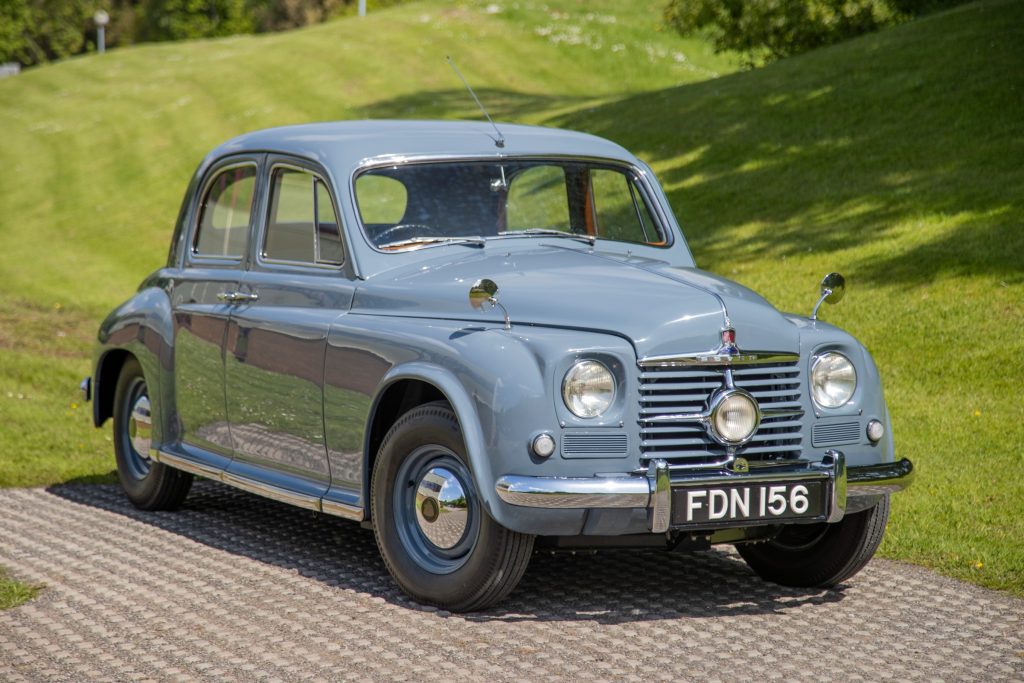
The next big update for Rover’s P4 arrived in 1957 with new front wings that replaced the rounded look of earlier cars with ones that now incorporated the indicators. A more potent six-cylinder version supplemented the 90 in the form of the 105, which was offered in standard, R, and S models. In 1959, Rover revised the engine line-up again, using the new P5’s 2625cc six-cylinder in a move to rationalise production.
This engine came with seven main bearings in place of the earlier unit’s four main bearings, though there’s nothing much in it for performance or reliability between the two. With the new six-pot, Rover offered the P4 as the 100 with 104bhp, which was then split into the 95 and 110 models in 1963 until its retirement in 1964. There was also the 80, which lasted from 1959 to ’62, with its 2286cc 77bhp four-cylinder engine shared with Land Rover as the budget option.
If the P4 line-up can seem a little convoluted, the upside is that all are capable of daily use and many owners still use their cars year-round. The quality of the metal used in the chassis and body is excellent, and the interiors are sumptuous in a restrained manner. Decent performance from the engines, especially the later and more powerful models, also means a P4 is a good bet for longer drives.
What’s a P4 like to drive?
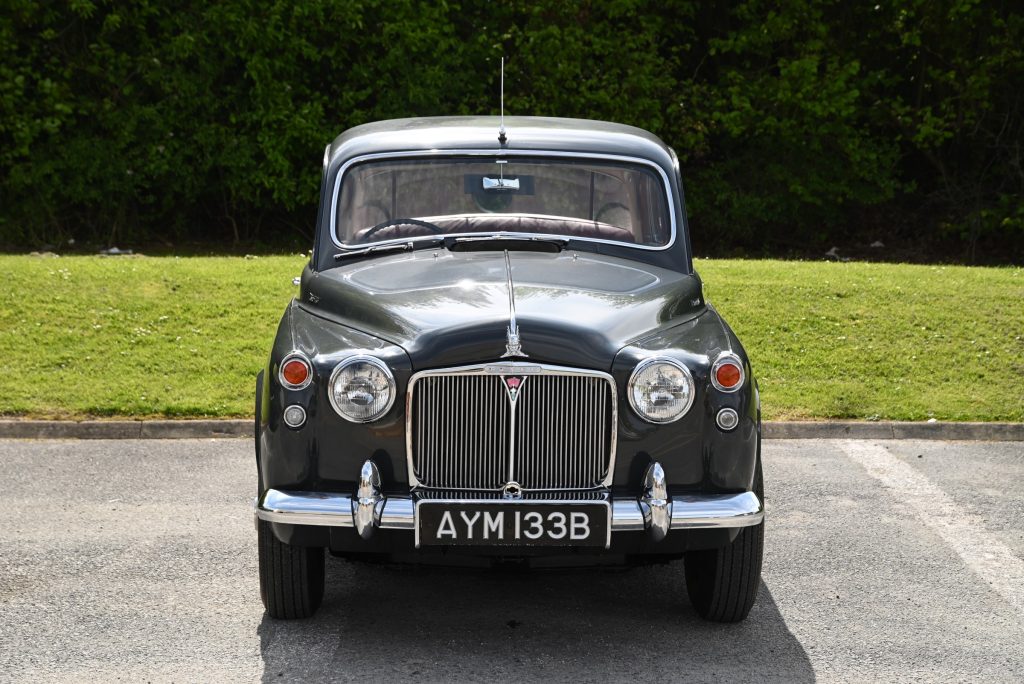
The Rover P4 may look like the automotive equivalent of Captain Mainwaring, but it has a bit more of the Private Walker to the way it accelerates. All of the six-cylinder engines are superbly smooth if properly maintained and even the 75 gathers pace with an easy gait. Better still are the more powerful sixes, with the 110 the swiftest of the lot, though its rarity means you are probably more likely to find yourself at the wheel of a 90 or 100, which were the biggest sellers by some margin. Both are brisk enough to go with the flow of modern traffic and will cruise on the motorway at 70mph. On a typical journey, you can also expect mid-20s mpg.
Don’t discount the 60 and, especially, the 80 models with their four-cylinder motors. The 80 feels more spritely than its 77bhp would suggest and, thanks to the lighter weight of the smaller engine, it feels more nimble through corners than the six-pot models.
Earlier P4s, such as the 60, came with a column shift, four-speed manual gearbox, while later cars swapped to a gear lever in the more usual transmission tunnel position. Both have a slightly vague action that doesn’t appreciate being hurried, though the 105S with its all-synchromesh gearbox is slicker. There was also the 105R with its two-speed Roverdrive automatic ’box that took the strain out of changing gear but is more of a curiosity now than a car to actively seek out.
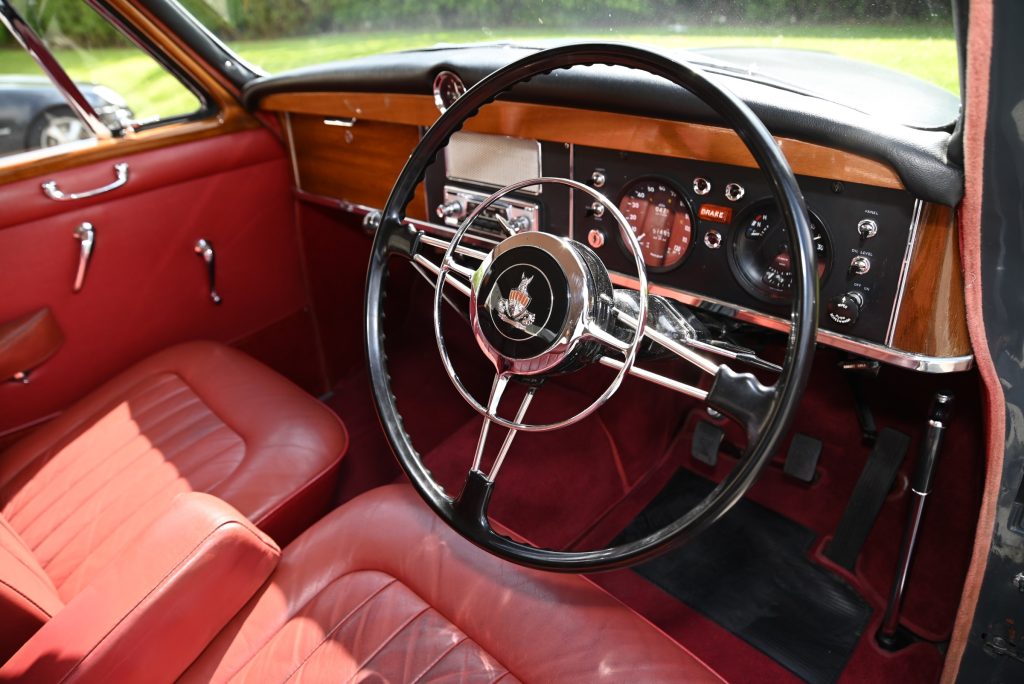
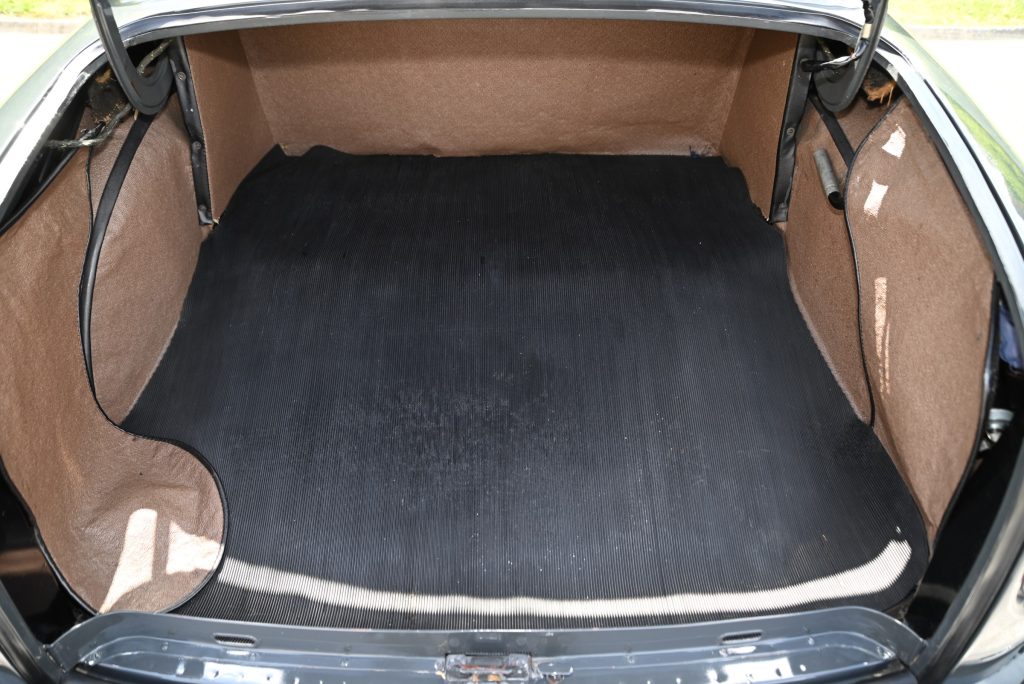
Also, early P4s came with a freewheel fitted, similar to that used on Saabs. The idea was that the car could coast when the driver lifted off the throttle pedal, saving fuel. It’s an odd sensation to experience now, so again is something to enjoy if fitted but not to explicitly pick a car for.
In every P4, the body leans a fair bit in corners, though grip is better than you originally expect. On radial tyres, the P4 can be hustled quite swiftly, but the steering becomes heavy on these tyres, so cross ply rubber is the better bet and the P4 feels happier to track in a straight line on the older style of tyre. The ride quality is also a little better on cross ply tyres with their extra give to cushion against bumps. The P4’s ride is one of its outstanding qualities, along with refinement in the cabin – you might be surprised how little wind and road noise you’ll hear even at higher speeds.
The P4’s interior can, in theory, seat six thanks to the bench front seat, but it’s better to keep the front for two people. The simple dash (rectangular instruments in earlier cars, and more familiar round dials in later models) is clear and the toggle switches for auxiliary functions are as simple to use as they are charming. Sit in the back, which you access through the rear-hinged ‘suicide’ doors, and there’s ample space, while the boot is also a good size.
How much does a P4 cost?
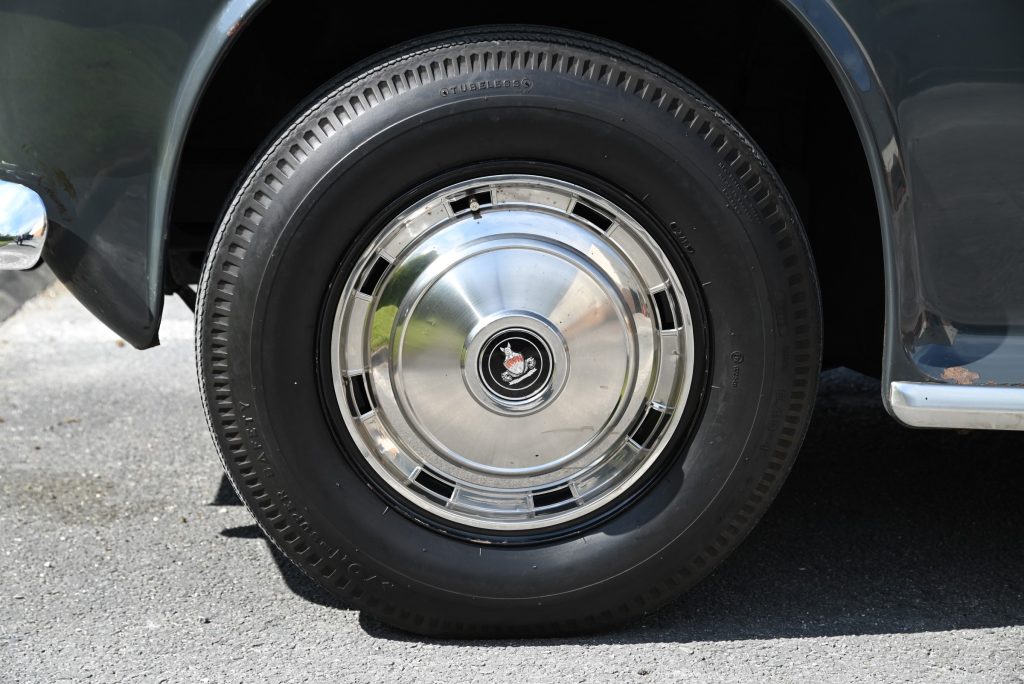
If you want to own the earlier ‘Cyclops’ 75, you’ll need to dig a little deeper into your finances than with other models in the range. Even so, a decent car that you could happily use every day should start at around £8000. Smarter examples come in at £12,000, while the very best 75s will nudge £20,000. That’s still significantly less than you’ll pay for a Jaguar 2.4-Litre in similar condition, which makes the P4 an underrated choice.
With the later cars, the four-cylinder 60 and 80 cars can be found in rough but running order from £3000. For something a bit more respectable, £5000 will bag you a decent car that needs cosmetics, while £10,000 will get you the best. It’s worth spending a bit more for a tidier car with good interior as the amount of wood and leather in the P4’s cabin can make this prohibitively expensive to put right on cheaper cars.
The later six-cylinder models all cost much the same whichever version arouses your inner middle-manager ambitions. Scruffy but sound cars can be bought from £4000 and will keep you entertained with some additional maintenance needed to keep them functioning. Up the budget to £7000 and you can find a good selection of tidy, cared for P4s, while £10,000 gets you one with few owners and in solidly preserved condition. The very best will set you back between £12,000 and £15,000 depending on model, colour, and history.
What goes wrong and what should you look for?
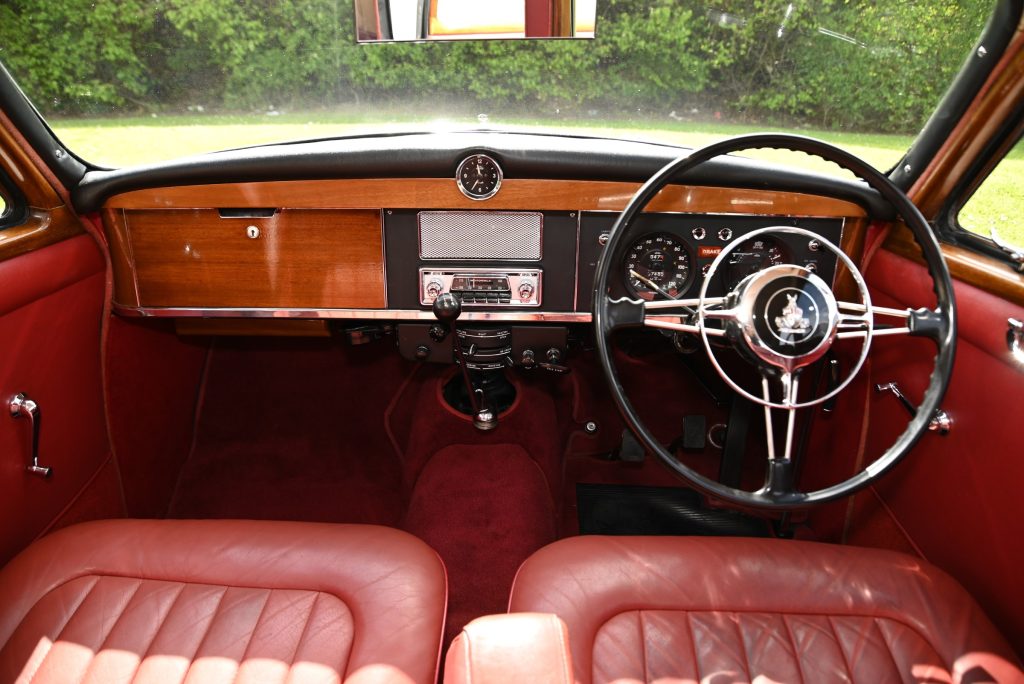
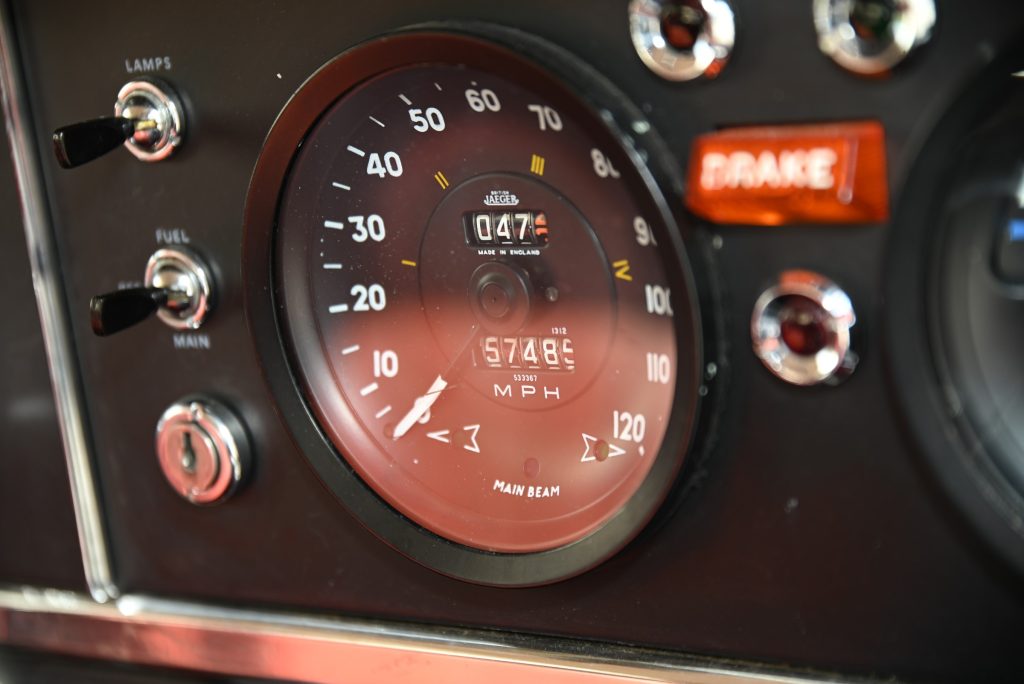
As mentioned above, the cost of retrimming a Rover P4 could outweigh the asking price, so make sure you pay attention to the condition of the cabin’s wood and leather. There’s also a fair amount of chrome for a lot of the fittings, which can be pricey to bring back to its best. Worn carpets are easier to sort, along with a saggy headliner, and while you’re checking the interior make sure to ask the seller if they have the keys for the boot and glovebox as they are different from the door and ignition keys. Lastly, check the electrics all work and the tool tray under the dash has all of its original tools.
Earlier P4s used Birmabright aluminium for the doors, bonnet, and boot. It’s resistant to corrosion, though not immune, and is easier to dent than the steel used on later cars. This mix of metals can also make a full respray more expensive than an all-steel P4 due to the different preparation needed for aluminium and steel.
During your inspection of the P4, look in all of the usual places for rot, including the sills, A- and B-pillars, wheelarches, inner arches, boot and inner floors. You also need to have a good poke around the hefty chassis that will take a lot of abuse from previous patch welds, but can succumb at the rear bump stops, where the chassis rises over the back axles, and the front outriggers.
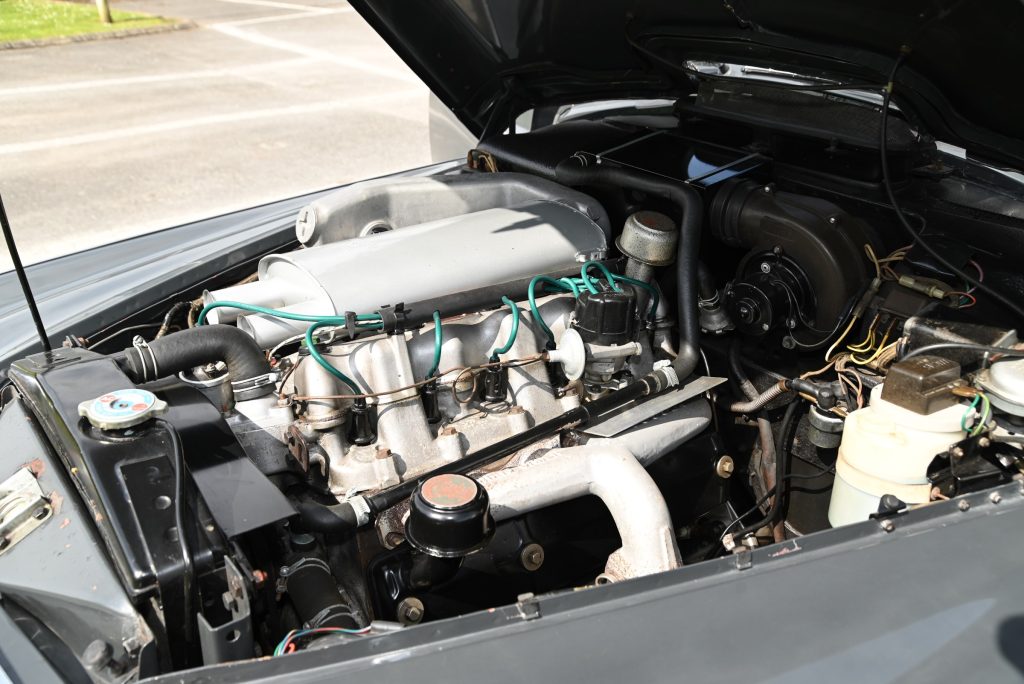
The engines in the P4 are very tough and will happily clock up huge mileages with basic servicing. However, keep an eye out for blue smoke that points to worn valve guides and listen for any knocking sounds from the camshaft that indicate a previous owner has not bothered with routine oil changes. The cylinder heads are made from aluminium, so the correct coolant mixture is vital to avoid cracking and internal corrosion of the waterways.
A worn gearbox, signified by a reluctance to engage gears, is expensive to put right, so run through all of the gears on a test drive. However, don’t be surprised if first is a little noisy as most did not have synchromesh on this ratio. Overdrive is a worthwhile extra to have if you want to cover longer distances and the Laycock item used on the P4 is simple and cheap to have repaired.
The rest of the Rover’s running gear will show up how caring the seller and previous owners have been. An attentive owner will have kept the steering box topped up with the correct oil and the suspension properly greased. A little and often is the key to keeping the P4’s suspension, steering and brakes in rude health. Later cars with disc brakes can suffer from seized calipers, but they are simple to rebuild. The same is true of the brake servo, which is known to fail and result in the brakes seizing on.
Which is the right P4 for you?
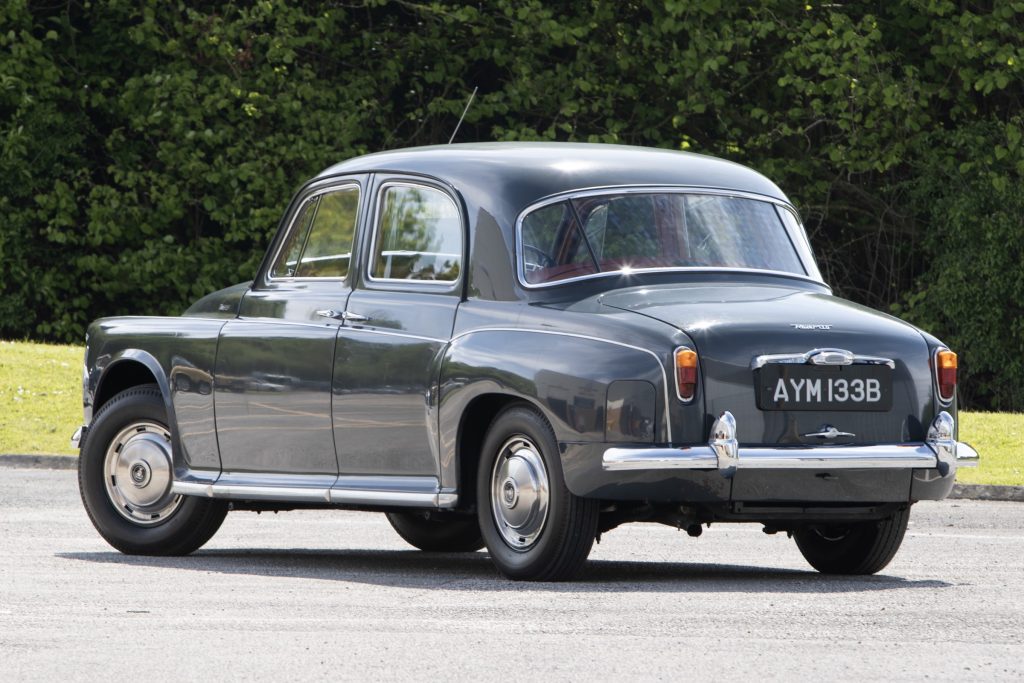
So much of the Rover P4’s charm stems from its clearly defined role in life when it was launched to appeal to middle-class, middle manner, Middle England. It did this perfectly with just the right mix of restrained styling, an elegant wood and leather interior, decent space, and superbly refined engines. It may not have been as grand as a Bentley, but the P4 let others discreetly know you had attained a certain position in life.
Now, the P4 is a lovely time capsule of that period and better to drive than this image would have you believe. The six-cylinder cars have a lovely engine note when pushed a little harder and reward with easy, flexible cruising, even if the handling is more suited to a less hurried pace. Don’t discount the four-cylinder cars, either, as they handle and steer more deftly thanks to less weight over the front wheels and their performance is much the same as the less powerful of the six-pot models. If you’re going down the four-cylinder route, the 80 is the better car for use in modern traffic, while the earlier 60 is more of a collector’s choice. The 75 with its ‘Cyclops’ front is the ultimate P4 for some and enjoyable, though it’s also more expensive to buy.
Of the six-cylinder P4s, the 90 and 100 are the most numerous of the facelifted cars and offer a lot of driving pleasure for the money. Some reckon the 105 hits the bull’s eye, while others will argue for the 110 with its greater performance. The reality is all P4s are enjoyable all-rounders that have been hiding their classic light under a bushel for too long. Bargain? Absolutely.
Check out the Hagerty Media homepage for daily news, features, interviews and buying guides, or better still, bookmark it. Or sign up for stories straight to your inbox, and subscribe to our newsletter.










There are some errors in this article. Its irritating to ser these perpetuated!
Martin, please shoot me an email at slombard@hagerty.com to let me know what you’ve found. Thanks.